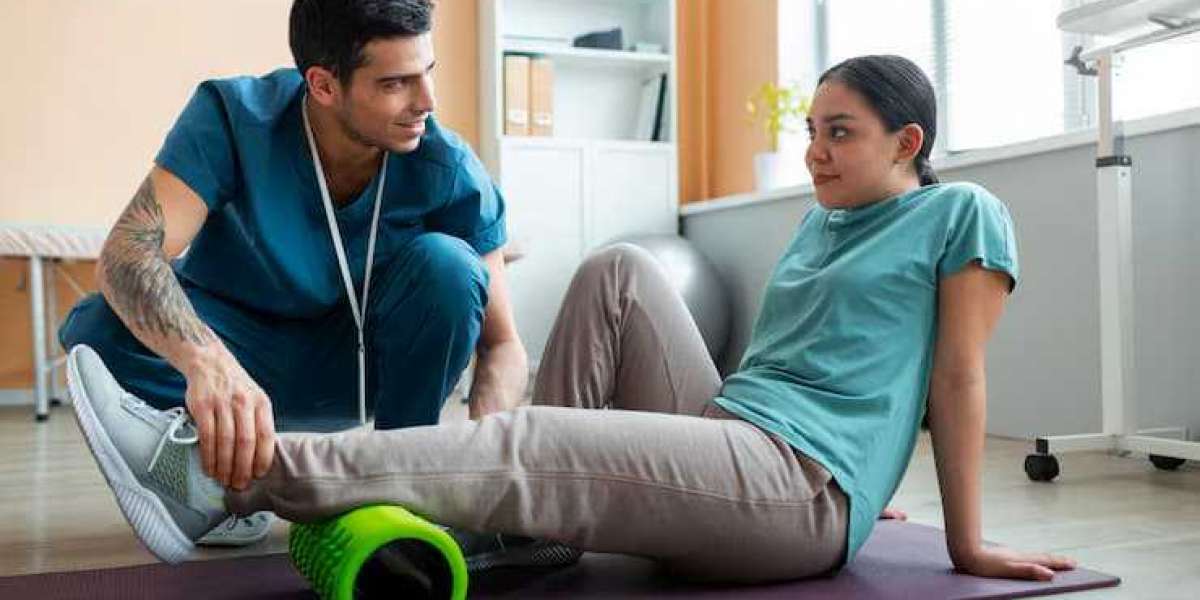In the competitive world of fitness and athletics, recovery has become a focal point for enhancing performance and minimizing injury risk. As athletes and fitness enthusiasts strive for better results, they increasingly turn to innovative recovery techniques. One such method gaining traction is contrast therapy, a technique that alternates between hot and cold treatments to aid recovery. This article explores the benefits of contrast therapy after workouts, how it works, and why it might be the secret ingredient to optimizing your recovery routine.
What is Contrast Therapy?
Contrast therapy involves alternating exposure to heat and cold to promote recovery and reduce muscle soreness. This technique typically includes two main components: hot water immersion (or heating pads) and cold water immersion (or ice baths). The process can vary in duration and intensity, but the general principle remains the same: the body is exposed to contrasting temperatures to stimulate physiological responses that enhance recovery.
How Does Contrast Therapy Work?
The physiological effects of contrast therapy are rooted in the body’s response to temperature changes. When exposed to heat, blood vessels dilate, resulting in increased blood flow to the muscles. This enhanced circulation helps deliver oxygen and nutrients while removing metabolic waste products from the muscles, contributing to faster recovery.
Conversely, exposure to cold causes blood vessels to constrict, which can reduce inflammation and swelling in the muscles. This response is particularly beneficial after intense workouts, where micro-tears in muscle fibers occur, leading to soreness and discomfort. By alternating between hot and cold, contrast therapy effectively creates a cycle of vasodilation and vasoconstriction, promoting better circulation and recovery.
Benefits of Contrast Therapy After Workouts
1. Reduced Muscle Soreness
One of the primary benefits of contrast therapy is its ability to reduce delayed onset muscle soreness (DOMS). After intense workouts, muscles often experience soreness due to microscopic damage. By incorporating contrast therapy, athletes can alleviate this soreness more effectively, allowing them to return to training sooner.
2. Enhanced Circulation
The alternating temperatures of contrast therapy stimulate blood flow, enhancing circulation throughout the body. Improved circulation delivers essential nutrients and oxygen to fatigued muscles while facilitating the removal of metabolic waste products. This process can lead to quicker recovery and reduced fatigue.
3. Decreased Inflammation
Cold exposure is known for its anti-inflammatory effects. By applying cold treatments after intense exercise, athletes can reduce inflammation and swelling in the muscles and joints. This is particularly beneficial for those who engage in high-impact activities that put stress on the body.
4. Improved Flexibility
Regular use of contrast therapy can contribute to improved flexibility. The heat component helps relax muscles and increase their elasticity, while the cold component can help reduce stiffness. This combination can lead to better range of motion and mobility, essential for athletes in any sport.
5. Enhanced Recovery Rates
Many athletes find that incorporating contrast therapy into their recovery routine leads to faster overall recovery rates. The improved circulation, reduced soreness, and diminished inflammation work together to help athletes bounce back from workouts more effectively, allowing them to train harder and more frequently.
6. Mental Relaxation
Beyond the physical benefits, contrast therapy can also promote mental relaxation. The soothing effects of heat followed by the invigorating sensations of cold can create a calming experience. This mental relaxation can help athletes recover not just physically but mentally, reducing stress and enhancing overall well-being.
How to Implement Contrast Therapy After Workouts
Incorporating contrast therapy into a recovery routine is relatively straightforward. Here’s a step-by-step guide on how to effectively use this technique after workouts:
Step 1: Prepare Your Setup
For a successful contrast therapy session, you’ll need access to both hot and cold water. This can be achieved using a hot shower or bath and a cold shower, ice bath, or ice packs. If you’re using a bath, ensure that the water temperature is comfortable—typically around 100°F to 104°F (37°C to 40°C) for hot and 50°F to 59°F (10°C to 15°C) for cold.
Step 2: Warm-Up Phase
Begin by immersing yourself in the hot water for about 3 to 5 minutes. This will help relax your muscles and promote blood flow. If you’re using a hot shower, aim to focus the hot water on the muscles that were most engaged during your workout.
Step 3: Cold Phase
After the warm-up phase, switch to cold exposure for another 1 to 2 minutes. This can be done by transitioning to a cold shower or an ice bath. The sudden change in temperature may be uncomfortable at first, but it’s essential to breathe deeply and allow your body to adjust.
Step 4: Repeat the Cycle
Alternate between the hot and cold phases for a total of 2 to 3 cycles. For instance, you may choose to do 3 minutes of heat followed by 1 minute of cold. Listen to your body and adjust the times as needed, aiming to find a comfortable balance.
Step 5: Cool Down
After completing the cycles, finish with a final cold exposure to help seal in the benefits. Following the contrast therapy session, take time to cool down and hydrate. This is crucial to replenish fluids lost during your workout and during the therapy session.
Who Can Benefit from Contrast Therapy?
Contrast therapy is beneficial for a wide range of individuals, including:
Athletes: Those participating in high-intensity sports or training can use contrast therapy to enhance recovery and reduce soreness.
Fitness Enthusiasts: Regular gym-goers can incorporate contrast therapy into their post-workout routine to improve overall recovery.
Individuals with Chronic Pain: Those suffering from conditions like arthritis or fibromyalgia may find relief from inflammation and discomfort through contrast therapy.
Recreational Sports Participants: Even casual athletes and weekend warriors can benefit from the recovery advantages of contrast therapy after physical activities.
Precautions and Considerations
While contrast therapy is generally safe for most individuals, there are a few precautions to keep in mind:
Consult with a Healthcare Professional: If you have underlying health conditions or concerns, it’s always a good idea to consult with a healthcare professional before starting any new recovery technique.
Listen to Your Body: Pay attention to how your body responds to contrast therapy. If you experience excessive discomfort or pain, adjust the temperatures or duration of exposure accordingly.
Stay Hydrated: Always hydrate before and after your contrast therapy session to ensure that your body stays well-hydrated.
Conclusion
In conclusion, incorporating contrast therapy after workouts can be a game-changer for those seeking to enhance their recovery routines. The benefits of reduced muscle soreness, improved circulation, decreased inflammation, and overall enhanced recovery rates make this technique a valuable addition to any athlete’s regimen.
As the world of fitness continues to evolve, exploring various recovery methods can provide individuals with the edge they need to perform at their best. For those ready to take their recovery to the next level, Prime Recovery offers a variety of innovative solutions designed to help individuals optimize their performance and well-being. Start your journey to better recovery today!







